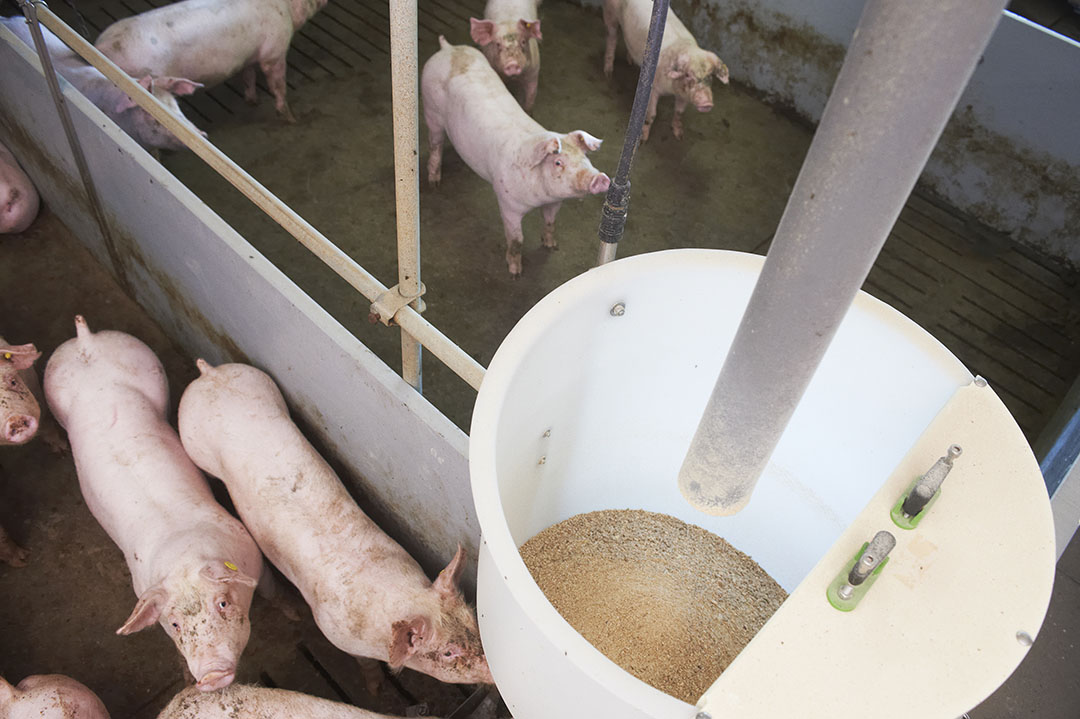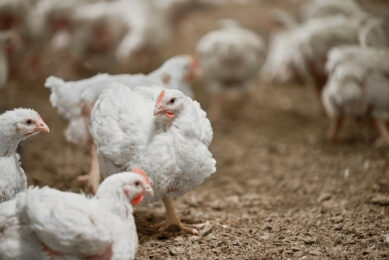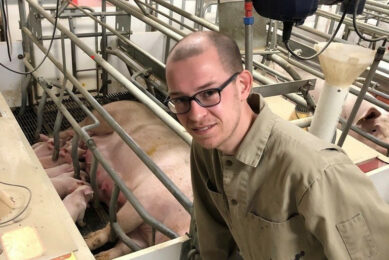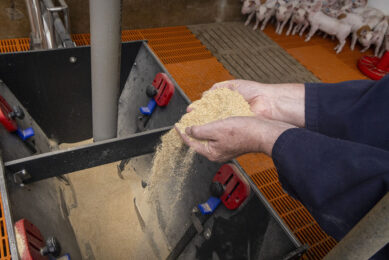Raising the phytase podium

To improve phosphorus availability and tackle the antinutritional effects of phytates, phytases have been increasingly used in animal feeds over the past 30 years. Effective phytases are currently available on the market, but there is still room for improvement.
Phosphorus plays a key role in metabolism and physiological processes such as bone development and maintenance, energy utilisation, protein synthesis, and efficient feed utilisation. Because monogastric animals lack phytases – enzymes that break down phytates – these started being added to animal feeds to maximise the bioavailability of digestible phosphorus. After the first commercial phytase extracted from fungi came on the market in 1991, phytases were widely used in animal nutrition. Later on, microbial phytases replaced fungal phytases. This new generation of microbial phytases were preferred by the animal feed industry due to their increased activity, proteolytic resistance and catalytic efficiency.
Boosting phosphorus dynamics
Phytate is not hydrolysed in the phytase-free monogastric gut, so the natural sources of phosphorous available in feeds are not absorbed. To avoid phosphorus deficiency, inorganic phosphate is added to diets. However, this represents a financial burden for producers as phosphate supplementation is generally provided through calcium phosphate, one of the most expensive nutrients added to feeds. Moreover, phytate has been shown to reduce animal growth performance. The antinutritional effects of phytate are linked to its ability to bind with protein and calcium and inhibit the activity of digestive enzymes, such as pepsin, leading to an increase in endogenous losses and shifting energy away from growth. Phytate also reduces nutrient digestibility within the small intestine, and impairs the proper absorption of several minerals, such as calcium, magnesium, iron and zinc.
The phytate issue began to be tackled through phytase supplementation. Phytases break down the available phytate, thus capitalising on a source of phosphorus that would otherwise be unused, reducing the need to supplement diets with phosphate. But the benefits of phytases go beyond releasing phosphorus: they also play a significant role in reducing the negative impact of inorganic phosphorous excretion to the environment. The excess phosphorous in phytate is often excreted in manure, which is a source of environmental pollution. Ultimately, phytases represent a win-win situation for both nutritional and environmental phosphorus-related issues. This led to the development of an array of different enzymatic options that enhance the nutritive value of plant-based animal feeds.
 Interview: Dr Andrew Morgan on the microbiome – fundamental to both health and disease
Interview: Dr Andrew Morgan on the microbiome – fundamental to both health and disease
Some 30 years ago Dr Andrew Morgan got involved in studying the microbiome and he has played an important role in the development of DuPont’s microbiome platform.
The ultimate phytase profile
An ideal phytase should be active in the low-pH environment of the stomach to begin phytate hydrolysis as soon as possible. It should also resist high temperatures during the pelleting process, and should have a high specific activity at physiological temperatures. The commercial phytases currently available perform differently in the laboratory, and thus vary in their effects on animal performance. The enzyme that currently has the highest bioefficacy and activity at low pH is a Buttiauxella phytase, which acts twice as fast as its direct competitors to ensure that most of the phytate is hydrolysed in the early stages of digestion, which take place in gut sections where pH is considerably lower than in subsequent sections. Enzymes with a superior pH profile will thus hydrolyse phytate in the upper part of the digestive tract as quickly as possible to effectively reduce the antinutritional effect of phytate. Pelleting, a process widely used in feed production in which high temperature and pressure are used, also impairs the stability of added feed enzymes and represents a major concern for feed manufacturers. However, the phytase market is continuing to develop and test novel enzymes and formulations in an effort to find new, more suitable enzymes that can cope with the challenges faced during feed production and are tailored for optimal swine nutrition.
Figure 1 – Comparative pH profile with 5 different phytases.

Better does not have to be enemy of good
The above-mentioned high bioefficacious phytase was further improved, resulting in the new Axtra PHY GOLD. Its performance in vitro followed by in vivo trials validated how it excels at replacing phosphate supplementation in animal feeds and also, for example, improving growth and digestive performance in pigs. Phytate in vitro trials were run with 5 different phytases and these assessed enzymatic performance over a range of pH, phosphorus release and harsh pelleting conditions.
Widening the enzyme’s pH ranges ensures better performance in very acidic environments such as the upper digestive tract, thus ensuring faster phosphorus release into the digestive system. The recently developed phytase had a superior pH profile compared to competitors (Figure 1), as well as higher thermostability when exposed to high pelleting temperatures, which is vital to avoid a reduction in the amount of available enzyme available in feed formulation. Superior phosphorus release results were also recorded when compared to 4 phytases currently available on the market. In vivo studies in sows and piglets fed a corn-based diet showed that the new phytase enzyme can completely replace all inorganic phosphorus supplementation in piglet diets while maintaining FCR and growth performance levels, compared to the positive control group. The piglets’ final body weight was also higher with the new enzyme, and this was validated in a trial in which the phytases were supplemented at 250, 500 or 1,000 FTU/kg (Figure 2). Phosphorus digestibility is a key indicator of how successful a phytase is in making phosphorus available to the animal. In a trial in which sows were fed diets supplemented with phytase at 500 FTU/kg, the new phytase significantly improved total tract phosphorus digestibility by 9.6% compared to Buttiauxella phytase. The recently developed phytase thus has a high phosphorus release rate, which makes phosphorus available for absorption during digestion.
Figure 2 – Effect of increasing phytase doses from 0 to 1,000 FTU/kg on the final body weight of piglets.

A new phytase with a great deal of promise
The new product had superior thermostability, enabled the total removal of inorganic phosphate from plant-based diets, improved swine performance and resulted in a better environmental footprint. It also proved to be especially useful for pre-mixers that have no control over their final customer’s pelleting conditions. Because even great enzyme performers can still be improved, enzyme tailoring remains a field worth continued exploration.
References available on request.
Author:
Rachael Hardy, DuPont Animal Nutrition











